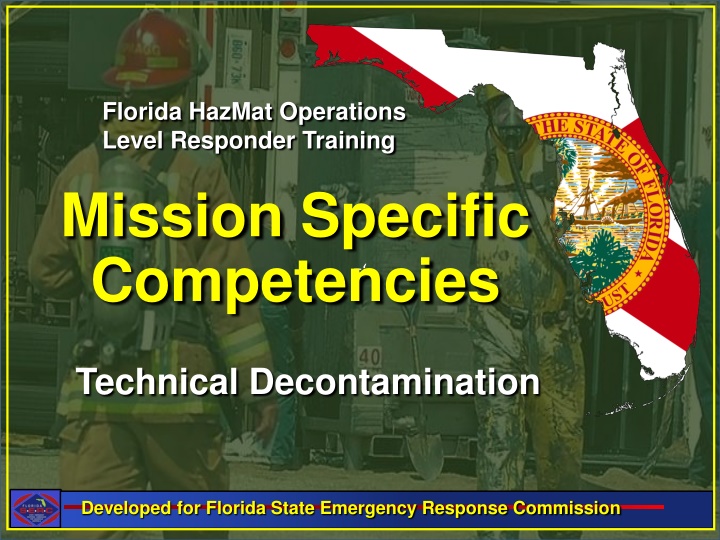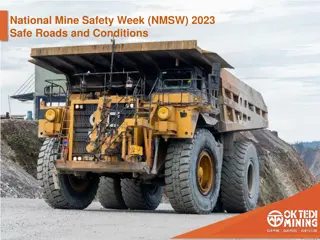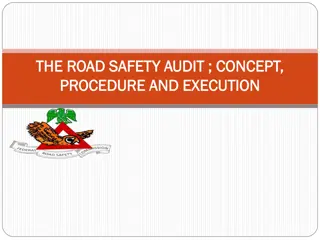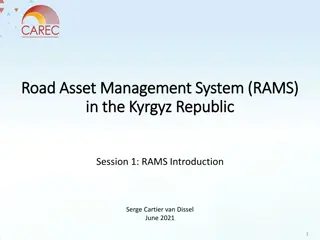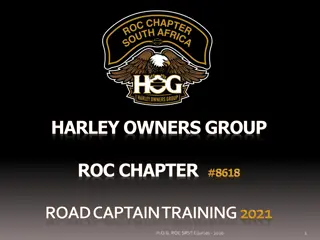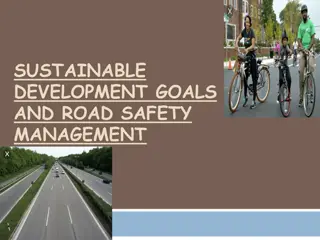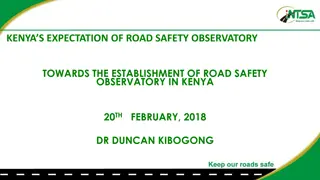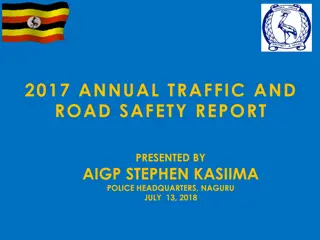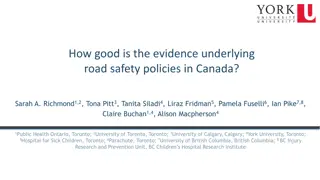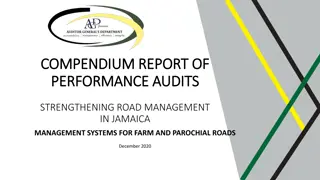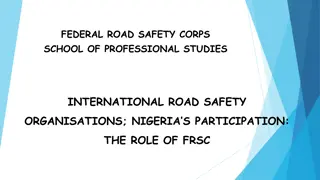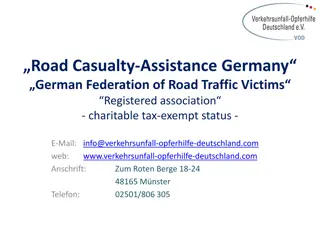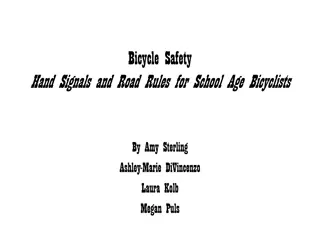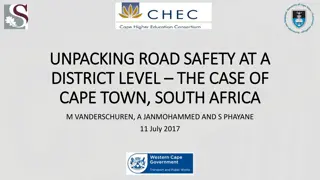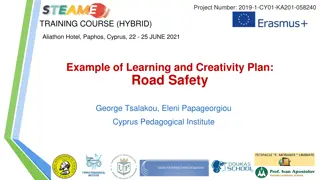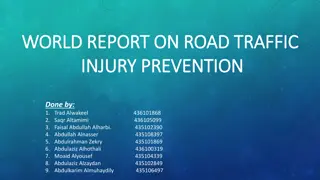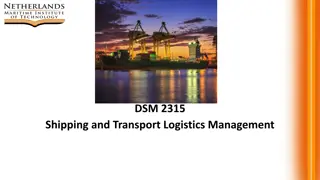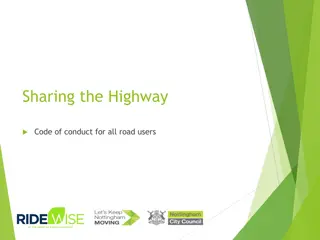Decade of Action for Road Safety Management Workshop
This workshop held in Dakar on Dec 5, 2013, highlighted the African Road Safety Plan and emphasized the pillars of the UN Decade of Action. It aimed to prevent road traffic injuries through effective management models, public service challenges, and sustainable responses as per the UN Resolution 64/2551 of March 2010. The event stressed the importance of country-specific strategies, setting long-term targets, and securing sufficient funding for road safety activities to reduce fatalities globally by 2020.
Download Presentation

Please find below an Image/Link to download the presentation.
The content on the website is provided AS IS for your information and personal use only. It may not be sold, licensed, or shared on other websites without obtaining consent from the author.If you encounter any issues during the download, it is possible that the publisher has removed the file from their server.
You are allowed to download the files provided on this website for personal or commercial use, subject to the condition that they are used lawfully. All files are the property of their respective owners.
The content on the website is provided AS IS for your information and personal use only. It may not be sold, licensed, or shared on other websites without obtaining consent from the author.
E N D
Presentation Transcript
Florida HazMat Operations Level Responder Training Mission Specific Competencies = = Technical Decontamination Developed for Florida State Emergency Response Commission
Prerequisites for Mission Specific Technical Decontamination Meet all competencies for: Awareness Level Operations Level Mission Specific Personal Protective Equiment Operations Level Responder assigned to Technical Decontamination Meet all competencies in this section =
Technical Decontamination Can be set up and operated by Operations Level trained responders. Set up to remove contamination from the PPE worn by entry team members. Will also remove contamination from tools and equipment as it leaves the hot zone. =
Purpose of Conducting Decontamination Contamination occurs when: Being splashed or sprayed by materials while conducting procedures. Contacting particles, vapors or mists in the air. Handling contaminated instruments, tools, or equipment. Walking, sitting, or kneeling on contaminated surfaces. =
Reducing Contamination The best practice to reduce issues with decontamination is to reduce contamination. These steps will reduce contamination: Conduct remote procedures (sampling, handling drums, opening containers, etc.). Cover contaminants. Cover traveled areas with plastic sheeting or absorbent pads. Use disposable items. Outer garments and disposable equipment. Limit contact. If contact is necessary limit the time of contact with the substance. Minimize contact. Don t walk through product or handle contaminated objects. Use protective covers. Place instruments, clipboards, and other equipment in plastic bags to reduce contamination. =
Planning for Decontamination To determine the appropriate type of decontamination you must know the type of PPE worn and the type of contamination. Surface contamination unwanted substances on the surface that has not absorbed. Easy to detect and remove. Permeated contamination substance has absorbed into the material. Difficult and may be impossible to completely remove. =
Selection of Decontamination Methods are based on: Chemical and Physical Properties Type of PPE worn Amount of contamination Nature and concentration of contaminant Type of contamination (surface or permeated) Characteristic of the surface of the equipment needing decontamination =
Decontamination Physical Removal Brushing Heat and Steam Scraping Vacuuming Washing and Rinsing =
Decontamination Chemical Removal Absorption Adsorption Chemical Oxidation Dilution Disinfection/Sterilization Evaporation Isolation and Disposal Neutralization Solidification Surfactants =
Implementing Decontamination Should be set up based on a worse case scenario The decontamination plan, development of the decontamination corridor, and communication to all on- site responders must be done prior to any team entering the hot zone. =
Location of Decontamination Located between the hot zone and the cold zone, inside the warm zone. Located in an area that will minimize the potential for exposure to those working in the cold zone. Must be marked to be easily recognized by all personnel on the scene. PPE is not required during set up as the warm zone is a clean zone until decontamination has started. =
Developing the Decontamination Corridor Tarp on ground to collect runoff. This may be accomplished using a premade tent with built in containment system. Each procedure performed at a separate station (washing and clothing removal). Each station is placed physically separate to the others to reduce cross contamination A clean side and dirty side should be assigned. Those being decontaminated stay on the dirty side and the decon workers stay on the clean side. =
Providing Decontamination PPE, tools, and equipment are efficiently decontaminated using detergent and water using a soft bristle brush. Occasionally this process will not remove the contamination and a chemical based decontamination process must be used. For this process to work you must know the contaminate. May not completely remove the contaminate but will reduce the harmful effects and render the contaminate less harmful. =
Wet Decontamination Process Used with the PPE worn has sealed seams. When used on sewn seam suits will transport the contamination to inside the suit to the wearer. Wet decontamination process should only be used on: Sealed seam garments Chemical presents a danger to the skin Runoff can be contained =
Dry Decontamination Process Involves the controlled removal of garments. Preferred process for disposable garments. Used when the chemical involved has low skin contact hazard. =
Measuring Decontamination Effectiveness Visual observation Monitoring using photoionization detectors, radiological survey meters, or colormetric tubes. Ultraviolet light for aromatic hydrocarbons and fluoresce. Wipe sampling sent to laboratories. No fool proof way to remove every bit of a chemical. =
